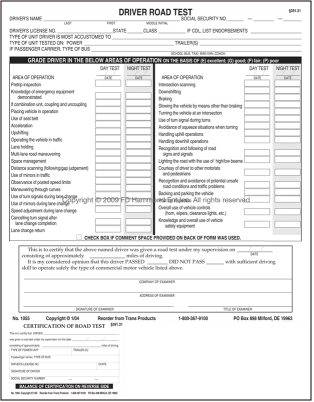School Bus Driver Practice Test Ontario

Ontario Ministry of Transportation online version of the Official Driver. Vision and knowledge test. A class B licence is needed to drive any school-purposes.
School Bus Drivers In Ontario Being a safe and responsible driver takes a combination of knowledge, skill and attitude. Information, Knowledge and Traffic Laws To begin, a driver must know the traffic laws and driving practices that help traffic move safely. Breaking these “rules of the road” is the major cause of collisions. Traffic laws are made by federal, provincial and municipal governments, and police from each level can enforce them. If you break a traffic law, you may be fined, sent to jail or lose your driver’s licence. If a driver gets caught driving while your licence is suspended, your vehicle may be impounded.
A driver needs to do more than just obey the rules. He/She must care about the safety of others on the road. Everyone is responsible for avoiding collisions. Even if someone else does something wrong, driver may be found responsible for a collision if the driver could have done something to avoid it. Because drivers have to co-operate to keep traffic moving safely, he/she must also be predictable, doing what other people using the road expect him/her to do. A driver must be courteous.
Courteous driving means giving other drivers space to change lanes, not cutting them off and signalling your turns and lane changes properly. School bus drivers must be able to see dangerous situations before they happen and to respond quickly and effectively to prevent them. This is called defensive or strategic driving. There are collision avoidance courses available where you can practice these techniques. Hiring and Training Professional Drivers When your family name is on the side of the school bus, you take safety VERY seriously. Safety is core business for family-owned school bus operators, and drivers are the most important safety feature on any bus.
The lower the driver turn-over rate, the safer the service. School bus drivers are trained to handle the extensive responsibilities they undertake with a combination of classroom and on-road training. Safe driving techniques, defensive driving skills and student management are all part of school bus driver training. Each driver must demonstrate knowledge of policies, traffic laws, and equipment standards as part of their training. Every driver is also thoroughly trained on how to complete daily pre-trip and post-trip vehicle safety inspections.
Drivers are also trained in accident and emergency response protocols including evacuation, First Aid/CPR and use of the fire extinguisher. Drivers make sure that the steps and aisles are clear, that luggage is properly stowed and that children remain properly seated, in order to minimize the risk of injury. Evolution Futuyma 3rd Pdf.
Statistically speaking, children are most vulnerable to serious injury when they are outside of the bus - before boarding or after leaving the bus - rather than when they are actually riding the bus. For this reason, company policies and driver training emphasize loading and unloading of passengers. The driver must focus on every step of the process, every single time.
The following safety tips are practiced by drivers to prevent incidents: • knowledge and enforcement of safe crossing procedures • accounting for all students before moving the bus • checking outside the bus, utilizing a bus attendant • watching the actions of motorists closely • staying alert for special dangers (e.g. Driveways) • dealing with behaviour issues before the stop, awareness of stragglers or students with special needs • responding to weather-related conditions • educating students about the school bus safety rules • and to ALWAYS expect the unexpected. The responsibilities of school bus drivers are endless. But there can never be enough knowledge and experience when child safety is involved.
For this reason, the class of license required to drive a school bus has the highest standards. In addition to regular driving record and criminal background checks, and regular medical exams, drivers are subject to periodic re-examinations.
School bus drivers must have a commercial driver's license and: A. Passenger and combination vehicle endorsements. School bus and passenger endorsements. Air brake and tank endorsements. Maximum time in transit: No pupil shall be allowed to remain in transit to and from school for: A.
More than one hour round trip. More than two hours round trip. More than three hours round trip. Can a school bus transport more pupils than indicated by the manufacturer's rated capacity for the bus? Inspection of buses are made one or more times a year in order to determine whether the school bus can be used to safely transport school children. Each state board of education is charged with the primary responsibility of rules and regulations regarding pupil transportation.
A school bus driver doesn't have to wear a seat belt at all times. Only some school bus drivers are required to participate in In-service training programs. Who makes the final decision to determine when weather conditions make the roads unsafe to travel? The School Administrator B.
The School Teacher C. The School Bus Driver 11. What is one of the more dangerous procedures a school bus driver must undertake? Driving in traffic.
Loading and unloading. Driving in the rain. When approaching a school bus stop you should activate your overhead amber lights how far from the bus stop? 40 Dias En La Palabra Pdf To Excel. Immediately after stopping you should: A. Open entrance door slightly to activate the stop arms and overhead red warning lights. Tell the children to stand back until you are ready for them to load.
Get the children onto the bus as quickly as possible. Always unload on the right outside lane if on a multi-lane road.
Pupils must walk at least how many feet in front of a school bus to cross the road? Answer Key 1. C by Last Updated.